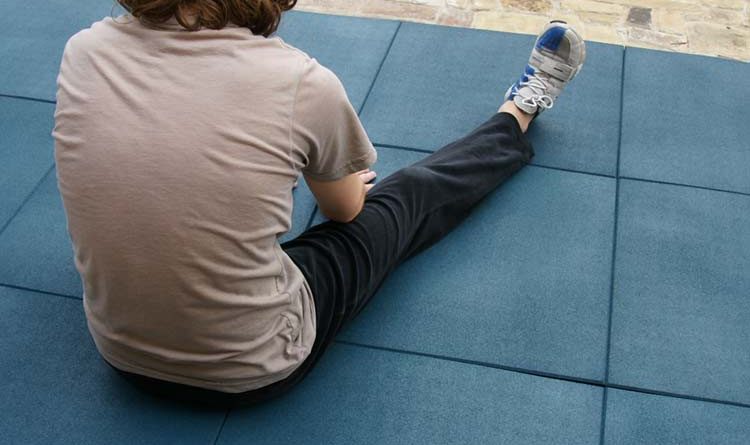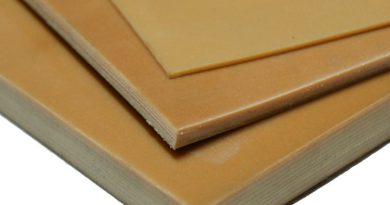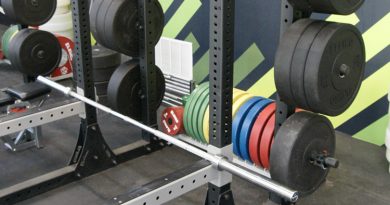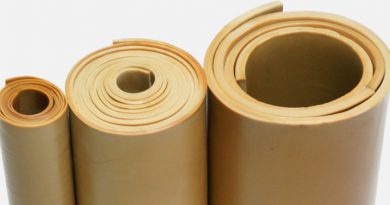Choosing a Workout Mat
With fitness becoming increasingly popular in today’s world, it is important to know how to choose a workout mat that is best suited for your workout routine. Depending on the intensity of your workout, some may require additional exercise equipment, weights, or dumbbells. These are all factors to take into consideration before choosing how thick or thin your home workout mat should be. Not only do training mats keep flooring safe from damage, they perform exceptionally well in keeping your joints and lower back safe. A home workout mat is a simple way to keep your floors safe and your body happy. Here are some factors to consider before purchasing your own home workout mat:
Intense Workouts
One of the most important factors to consider before choosing which workout mat is best suited for you is how intense your workout routine is. Rigorous exercise, such as cardio workouts, require excessive movement that can cause pain in your joints and lower back if not performed on properly cushioned floors. A common misconception about joint and lower back pain is that it can only develop in older adults and the elderly. This statement is incorrect as younger adults or even children can experience joint and lower back pain from over use or when walking or running on hard surfaces for extended periods of time. The rubber material of a workout mat is elastic enough to provide supple cushioning to prevent injuries like this from occurring. The addition of a home workout mat is essential to your joint and back health no matter what age you are.
Comfort
Yoga or aerobics exercises are not as rigorous of workouts as cardio exercises are. They do not require much movement and are more focused on improving flexibility and toning muscles. Therefore, there is no need to purchase a bulkier home workout mat for floor exercises that are less rigorous. Despite the thinner nature of these mats, an anti-fatigue workout mat is still durable and thick enough to provide cushion and protect the subflooring underneath from lighter movement and exercise equipment. Oftentimes, anti-fatigue workout mats are designed to be made of a softer rubber material or have hallow undersides to provide you with the perfect amount of cushion and grip.
Exercise Equipment
Large exercise equipment and heavy weights require thicker training mats to protect the flooring underneath. If your workout routine involves heavy equipment, mats that are 3/8-inch or thicker is recommended. A good rule of thumb to follow when selecting a thickness is: the thicker the mat, the more abuse it can take. Exercise equipment, specifically treadmills, ellipticals, etc., emits vibrations that can eventually damage your expensive flooring and can even crack concrete with enough exposure. To prevent this from happening, rubber training mats are recommended. The rubber material of these mats allows the vibrations from the machines to be evenly distributed across the surface of the mat.
Space
The main benefit of interlocking tiles is that it is customizable to fit the preferred space. You may add more tiles if the space is larger or remove some tiles to fit a smaller space. This allows your home workout mat to be placed anywhere you would like since all you have to do is add or remove some tiles to make it fit the available space. Rubber mat rolls are also available in custom lengths up to 50 consecutive feet. These are ideal for larger spaces or custom spaces; however, home workout mat rolls are not as versatile and mobile as interlocking tiles are.
Outdoor Workout Areas
A workout mat made out of recycled or reclaimed rubber is best suited for outdoor use. Both recycled and reclaimed rubber are made up of old or unused vehicle tires. The main difference between the two rubber materials are their manufacturing processes which produces a different finish for both rubber materials. Reclaimed or recycled products keep the weathering characteristics of rubber tires and are ideal for playground and outdoor fitness areas. Playgrounds in particular with benefit greatly with the addition of recycled rubber mats. . With the durability and excellent outdoor life of post-consumer rubber, chances of these mats being damaged or destroyed are extremely slim.
Choosing the right home workout mat for your exercise routine is extremely important, not only for the integrity of your floors, but also to keep your joints and lower back from injury. A workout mat may vary in thickness, size, form and rubber material and it is important know which is best for your routine. Thinner mats are generally used for less rigorous exercises and are geared more towards comfort and mobility. On the other hand, thicker mats are used for workouts involving heavy movement, exercise equipment or weights and dumbbells to protect the sub-flooring underneath. With various forms of training mats also available to fit custom spaces, a workout mat is a necessity for keeping you and your floors healthy and safe.
Click here to check out our article on rubber gym mats and discover how rubber can offer durable and long-lasting gym flooring!




